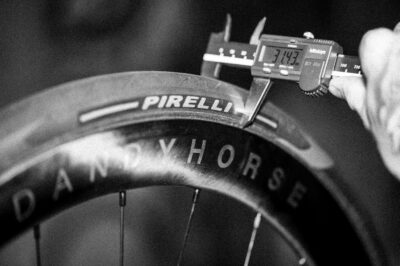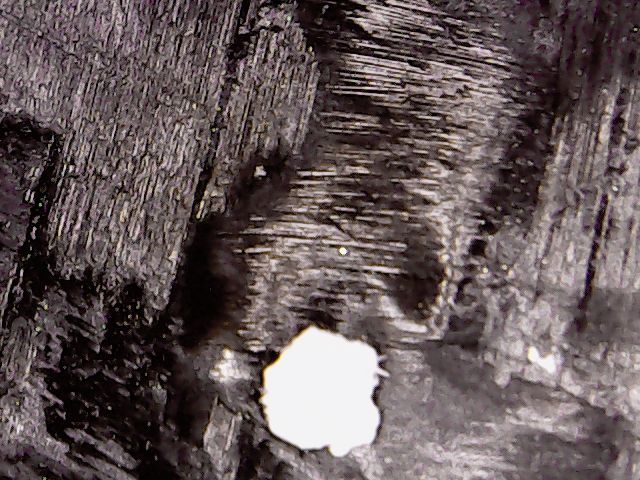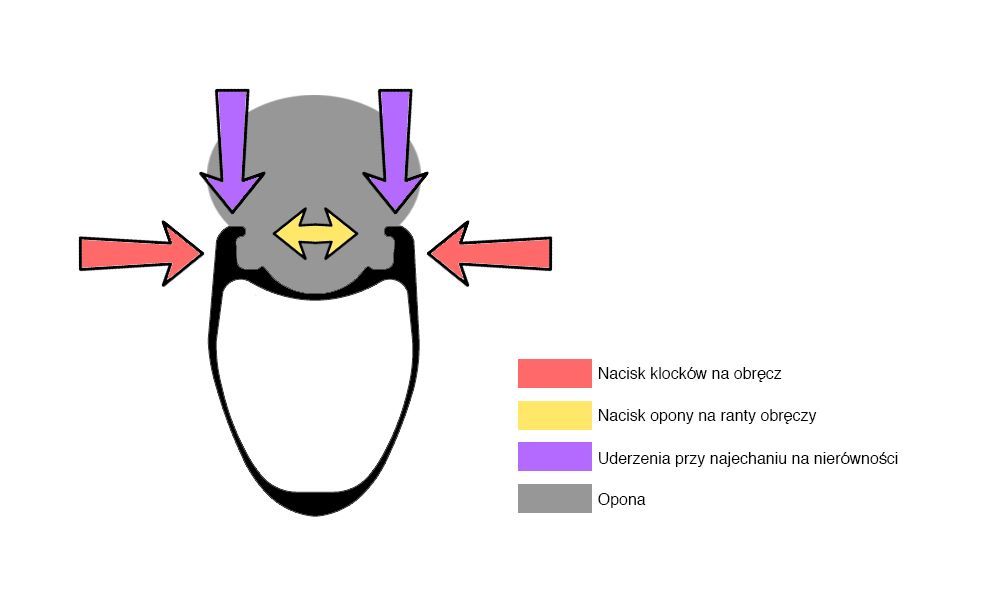
Despite the technological progress made in recent years, overheating carbon rims is still a problem. It seems that disc brakes will sooner replace rim brakes on the market than the problem will finally be solved. Are the bubbling, cracking braking surfaces on carbon rims the fault of the rim manufacturer, the wrong brake pads, or their incorrect adjustment? We will try to answer these questions.

According to the law of conservation of energy, the amount of energy in an isolated system is constant – this means that it cannot be created from nothing, nor destroyed or disintegrated. In a very simplified way, a cyclist riding a bicycle creates such an isolated system with the bicycle. By pedaling, he increases the kinetic energy of the cyclist-bicycle system. In order to be able to brake, the kinetic energy of the system must be reduced. In order for this to be possible, it must be converted into another form of energy. During braking, the kinetic energy of motion is converted into heat energy (sometimes also acoustic energy, when the pads squeak annoyingly) so that the speed of movement is reduced. Heat is generated as a result of friction between the brake pad and the braking surface of the rim.



In the case of aluminum rims, this is not a big problem, because aluminum has a high thermal capacity and conducts heat well. Thanks to these properties, the heat generated during braking is distributed throughout the entire volume of the rim, and then dissipated into the air. The melting point of aluminum is about 660 degrees Celsius, and the temperatures to which the pads heat up during braking rarely exceed 300 degrees Celsius, as you can see there is a safe margin. In the case of rims made of carbon, the situation is worse. Carbon is a composite of carbon fibers and epoxy resin. Both the resin and the carbon fiber have low thermal capacity and poor heat conductivity within the rim profile. What’s more, carbon is much more sensitive to overheating.
The value describing the temperature to which a given rim can be heated is the glass transition temperature (Tg) of the epoxy resin used to produce the rim. After exceeding this temperature, the resin changes from a solid to a liquid gel. This is also the temperature at which the rim is destroyed and bubbles or cracks appear on the braking surfaces. Unfortunately, there are few resins that combine a high Tg temperature with other parameters necessary for the production of bicycle rims at the required level, and those that do exist are very expensive. Most high-quality rims are produced using resins with a Tg in the range of 150-200 degrees Celsius. According to Zipp research, the carbon braking surface can heat up to 370 degrees Celsius during long braking, so there is no margin of safety. So far, no rims have been developed that could withstand such temperatures.

It is not difficult to damage the braking surfaces of carbon rims, especially on descents. However, it is not the case that the user of wheels on carbon rims is doomed to ride with their heart in their throat and can do nothing to solve the problem of overheating brake surfaces. The first thing to do is to choose good brake pads. Remember to always use only and exclusively brake pads recommended by the wheel manufacturer. Most wheel manufacturers consider the use of pads other than those recommended to be equivalent to the expiration of the warranty. Good quality pads can help to dissipate some of the heat generated, including in the form of fraying chips. Heated chips dissipate some of the heat generated, so you should not perceive the softness of the pads as a flaw.
The second issue is how the pads are set. Not all cyclists pay due attention to whether the pads are in contact with the rim parallel to the entire surface and press on it with equal force. These are factors that can contribute to the destruction of the rim even during a single descent. It is also important to remember to adjust the setting of the brake pads as they wear out. The next factor, possibly the most important, is the way you brake. On descents, you should brake in a pulsating manner, using both brakes. For every 3 seconds of braking, at least 3 seconds of riding with the brake pads open must elapse. You should not brake for more than a few seconds in a row. A few minutes of descent with a lightly squeezed rear brake is a sure recipe for destroying almost any carbon rim. A few years ago, the American company Alto Velo conducted a suggestive test that was supposed to prove that their rims are exceptionally resistant to heat.
The first thing that comes to mind after watching the test is that the Alto Velo rims are the best because they did not sustain any damage. However, this is a false conclusion. This test primarily proves that the Alto Velo rims have the least rough braking surfaces and the least amount of heat is generated during braking. In fact, the rims that gave in first can boast of the highest braking efficiency. In high-quality rims, the braking surfaces are more rough, which increases friction (braking force), and therefore also the amount of heat generated during braking per unit of time. We will not dwell on other methodological errors of the test authors, but we believe that they are a suggestive example of the fact that if a cyclist really wants to, they will destroy any rims.
The rim flange balances many forces and withstands large loads. Another way to reduce the risk of damaging the rims on descents is to pump the tires to a lower pressure. Reducing pressure translates to a lower expansion force acting on the rims, so they will be able to withstand higher temperatures without damage.

Disc brakes or wheels with aluminum rims completely eliminate the problem, but to minimize the risk of damaging the braking surfaces in the case of carbon rims, you should:
Share:

Extra discount
Buy any two sets of carbon wheels
and get 5% off both!
Simply add both wheel sets to your cart and the discount will be applied automatically.